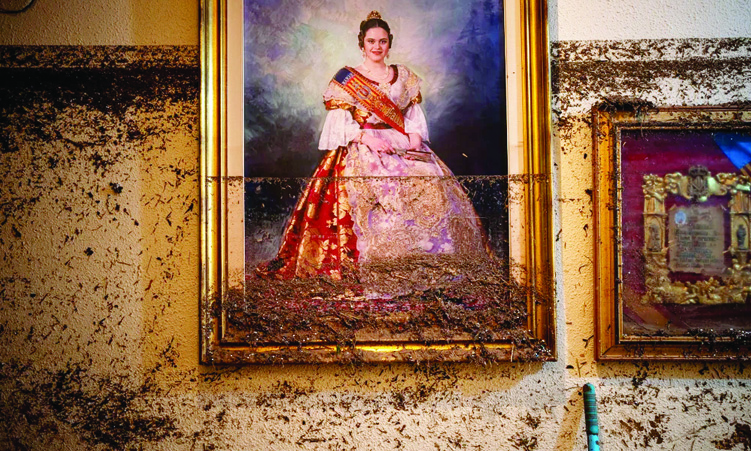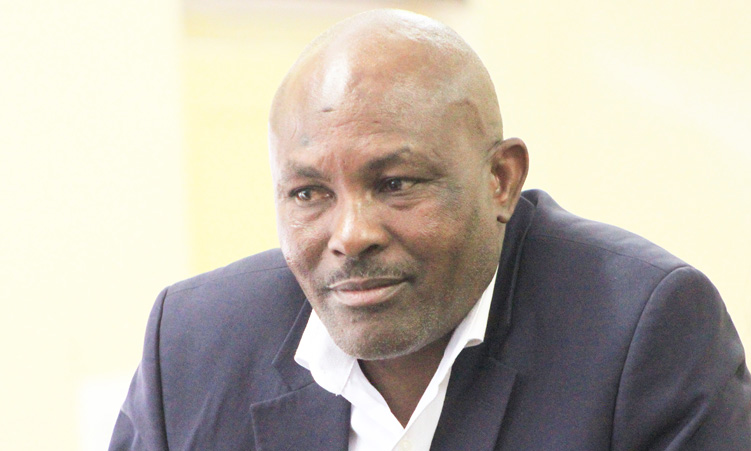The annual ‘ArtSplash’ exhibition of the College of the Arts (Cota) campus at Katutura Community Art Centre (KCAC) is back on.
The annual showcase provides an opportunity for the institution’s art students to show what they’ve been working on throughout the year, and perhaps even sell some of their best pieces.
The KCAC, which is usually filled with students hard at work, was transformed into a gallery of varied artworks – ceramics, prints, textiles, jewellery, drawings and more.
The opening last Friday was abuzz with excited students eager to showcase their work and the public who caught a glimpse of Namibia’s next generation of talented artists.
Opened by the CEO of the National Art Gallery, Snobia Kaputu congratulated the students on their efforts and encouraged them to continue creating great bodies of work.
Cota visual arts head Nicky Marais said the annual exhibition forms an important part of the students’ holistic education.
“We do ‘ArtSplash’ because the students need to sell their work. It is an essential part of the whole exercise. I always think that you can divide making art into three parts: Making it, displaying it and selling it. People are often trained not to be commercial but it is important for students to learn what the market can stand. They need to learn how to price their work and how to sell it,” she said.
Third-year student Petrina Mathews stood out with her live-action performance artwork titled ‘Why Are You Raping Us’, which saw the artist covered in paint from head to toe. During the performance Mathews splashed paint onto her canvas on the floor, and proceeded to thrash out in frustration at the rape epidemic in the country, which has seen over 3 000 cases reported in the past three years.
“I did the piece to confront men who are constantly raping women around us. Everyone is shying away from the topic. These aren’t men who are far from us or strangers, they are people from our homes, our neighbours, people from work or church. These are the men who rape us but nobody is confronting them. So my work is about confronting the people about topics they don’t want to talk about and trying to spark a conversation,” she said.
Following her to her mini studio on campus, I got to see more of her work, which features a kaleidoscope of colours that she transfers to her canvas to express her emotions and feelings. Her use of colour expertly communicates feeling, which ranges from hope to despair, and the subtle representations of movement created in the imprints she leaves with her hands, shoes, feet and body evoke a sense of empathy and connection to the emotions which inspired her.
Reflecting Society
Another stand-out piece of work was ‘Commando I’ by Lee Murangi – a mixed-media installation in the shape of a gravestone, draped in stiff, blackened fabric.
At the headstone is a figurine of a Herero woman, looking down into the graves of a sea of other Herero woman, all holding up flags of red, white and green, and standing on a swath of red cloth. The piece pays homage to the Herero-Nama genocide, and is a call for unity in the Herero community.
“I was trying to address the conflicts around the commemorations at Okahandja. We are all Hereros. It’s not like when one dies, we will be buried in a separate place. We will all be buried together. Instead of holding separate commemoration events, we should all unite,” he said.
His innovative use of materials lend a quality of strength to the piece, while the figurines of the Herero women display how innovative students have become in using the materials available to them to create meaningful works of art.
The students from the new media diploma programme also showcased a selection of work which included graphic design, photography, stop-motion films, packaging design, coding and more.
The third-year students created their own branding – from photographing a product to creating a brand identity for it, and take-aways like flyers and packaging.
Aino Titus created a stunning concept titled ‘Tribal Cook’, which included a recipe book, videos on how to make traditional recipes and little recipe cards the public could take home with them.
A lot of the skills the new media students learn is to prepare them for work in the industry. The programme aims to offer comprehensive tools which allow them to create products from start to finish. A great project the third-year students worked on was creating photobook dummies – where they photographed a subject of their choosing, worked on layouts for books, and then printed them to see how they translated onto physical form, said Kristin Capp, photography lecturer and new media section head.
Mathews beamed at the turn-out at the exhibition, as well as seeing how her work affected the public and her family, who initially did not understand why she chose to be an artist and not follow a more conventional path.
Like her classmates, she’s hopeful for the future in which she can create more, become self-sustainable and show the world that art can be a viable career choice.
‘ArtSplash’ is on at the KCAC until 26 November.
Stay informed with The Namibian – your source for credible journalism. Get in-depth reporting and opinions for
only N$85 a month. Invest in journalism, invest in democracy –
Subscribe Now!






